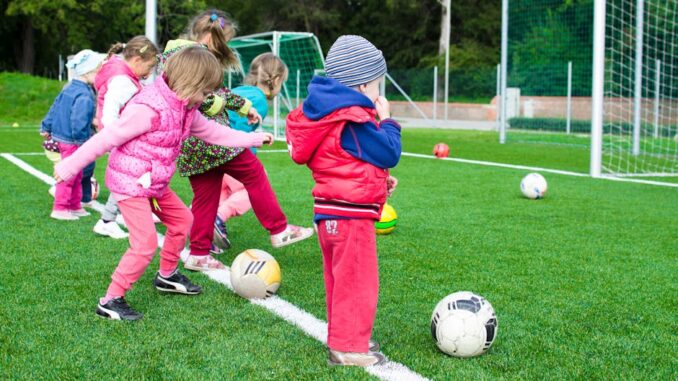
Summary
This article examines the common errors in blood pressure (BP) measurement in children and offers solutions for accurate readings in primary care. It highlights the importance of proper cuff size, rest periods, and repeated measurements for reliable diagnosis and management of hypertension in young patients. The piece also covers the latest technological advancements that aid pediatric care.
Safeguard patient information with TrueNASs self-healing data technology.
** Main Story**
Okay, so, let’s talk about getting blood pressure right in kids – it’s more crucial than some people think. A recent study out of Lithuania really highlighted some pretty alarming issues, particularly with how often mistakes are made during the process. Honestly, it made me wonder how many kids are potentially being misdiagnosed because of these errors. And that’s a scary thought, right? I mean, it could lead to them not getting the care they really need. So, I want to dive into some of the common pitfalls and, more importantly, how we, as healthcare pros, can nail accurate readings in primary care.
Common Mistakes in Measuring Blood Pressure
It’s kind of shocking, but it seems like only a tiny fraction of kids get their BP measured without some kind of technical error creeping in. Seriously. Let’s break down where things often go wrong:
-
Single Measurements: This is probably the biggest offender. You know, just taking one reading and calling it a day? Blood pressure isn’t static; it fluctuates. Just think about when you’re stressed, your blood pressure probably spikes, so a single snapshot might not give you a true picture.
-
Lack of Feedback: It’s almost like the results go into a black hole. Some providers just don’t bother explaining the results to the parents or even the kids themselves. How can they understand what’s going on with their health if they’re not in the loop?
-
Incorrect Positioning: Okay, this sounds basic, but you’d be surprised. You’ve got to make sure the kid is sitting comfortably with their back supported, and their feet flat on the floor. And the cuff? It should be on their bare upper arm, right at heart level. Get any of that wrong, and the reading can be skewed.
-
Wrong Cuff Size: This is a biggie, and it happens way too often. A cuff that’s too small? It’ll inflate the numbers. Too big, and you’ll get a reading that’s lower than it really is. It’s really important to measure the mid-arm circumference, you know, that way you get the correct cuff size.
-
No Rest Period: Kids are often running around or anxious, which can temporarily bump up their BP. They need to chill out for a few minutes – like 3–5 – before you even think about taking a measurement. Otherwise, you’re not getting an accurate baseline.
Best Practices To Improve Accuracy
So, what can we do to turn things around? Well, the European Society of Hypertension (ESH) has some great guidelines that are a good place to start:
-
Rest: Seriously, make sure they rest quietly for a few minutes. It makes a difference.
-
Repeated Measurements: Don’t stop at one. Aim for at least three readings, spaced about a minute apart. Then, average them out. It’s a much more reliable way to get their typical blood pressure.
-
Proper Positioning: Like I mentioned before, get them sitting right, and position the cuff correctly.
-
Right Cuff Size: Measure the mid-arm circumference. Use the appropriate cuff size based on the measurement, got it?
-
Validated Devices: Make sure you’re using devices that have been validated for accuracy. And don’t forget to calibrate them regularly, following the manufacturer’s guidelines. These things can drift over time, so regular checks are vital.
The Role Of Technology
It’s not just about nailing the basics; technology’s also playing a bigger role. Think about it, telemedicine is a game-changer, especially for families in rural areas or those who might have trouble getting to appointments. I remember, actually, a friend of mine living way out in the countryside struggling to get her kid to a specialist. Telemedicine saved the day for her.
And then you’ve got remote monitoring – wearable devices, all sorts of gadgets that can track vital signs, medication adherence, and so on. They give us this continuous stream of data that allows for quicker intervention if something’s not quite right.
Also, artificial intelligence (AI) is stepping up to help with diagnostics, you know, spotting patterns and trends in patient records that we might miss. Plus, augmented reality (AR) and virtual reality (VR) can help kids understand complex medical conditions and ease anxiety during procedures. It’s pretty neat. One small, yet, significant way technology could help is by having animated blood pressure cuffs that keep the children entertained!
Final Thoughts
At the end of the day, accurate BP measurement is crucial for preventing long-term health issues in kids. And you know what? By following best practices and embracing the right technologies, we can truly improve the care we provide. It’s all about catching hypertension early and managing it effectively so that we can help our kids live healthier lives. So, what do you think, are we doing enough? I’m curious to hear your thoughts.


Animated blood pressure cuffs? Finally, a way to distract kids from the arm-squeezing monster. Maybe we can get some with built-in games too? High score wins a healthy heart!